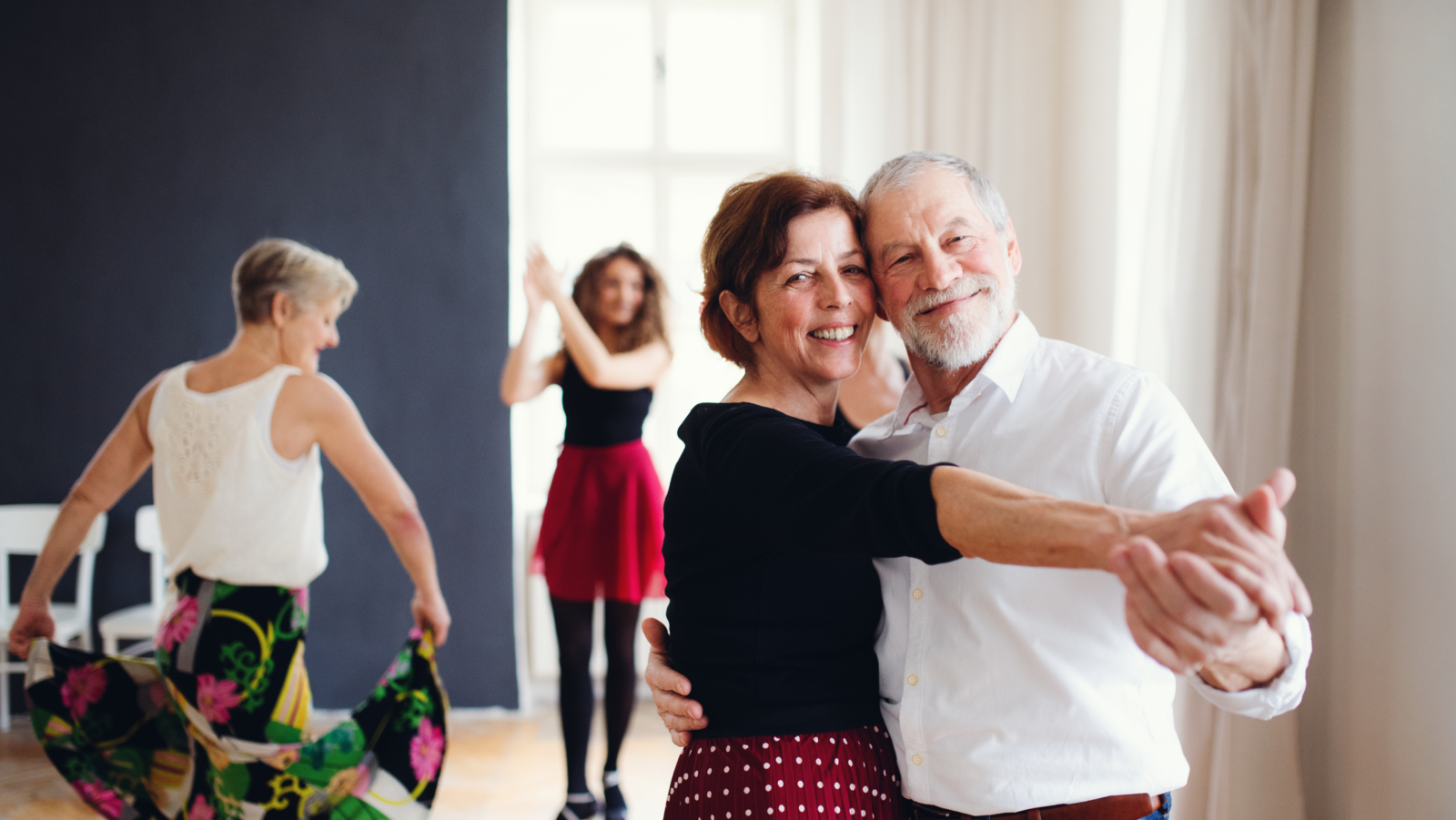Dance Your Way
to Good Health!

BY BETH DOUGLAS
We all know that dancing can be great therapy… but not many of us truly understand the depth of the positive effects of dance for our health. Not only has dance been shown to be beneficial for general heart and brain health, it is also the ONLY activity which has been proven to stimulate all four quadrants of the brain.
Jessica Conneely, founder of Dance4WellBeing and Co-Director Dance for Parkinson’s Australia, says that dance stimulates the brain’s reward center, improves cognition, executive function and improves quality of life by relieving anxiety and depression.
“Every day brings a chance for you to draw in a breath, kick off your shoes, and dance.” – Oprah Winfrey
A 2003 study in the New England Journal of Medicine by researchers at the Albert Einstein College of Medicine revealed that dance can decidedly improve brain health. Metrics show that dance has positive effects on recovery for those with cancer, a history of strokes and falls, as well as those who may have some mobility issues. Dance is an incredibly powerful method used for holistic treatment of conditions that are prevalent in the aging segment of our population.
As physical exercise, dance is, of course an invaluable activity that results in:
• Reduced blood pressure in some people with hypertension.
• Stronger bones and reduced risk of osteoporosis.
• Improved condition of your heart and lungs.
• Increased muscular strength, endurance and motor fitness.
• Increased aerobic fitness.
• Improved muscle tone and strength.
• Weight management.
• Better coordination, agility and flexibility.

“Our members love the exercise benefits of dance, and it’s a great
way to also socialize and make new friends. When members are dancing, everybody is smiling,” says Tammy Stark, Senior Center Manager of Senior Friendship Centers in Venice, Florida.
Benefits of Cardiovascular Activity for Seniors
• Older adults can obtain significant health benefits with a moderate amount of physical activity, preferably daily. A moderate amount of activity can be obtained in longer sessions of moderately intense activities (such as walking) or in shorter sessions of more vigorous activities (such as fast walking or stair walking).
• Additional health benefits can be gained through greater amounts of physical activity, either by increasing the duration, intensity or frequency. Because risk of
injury increases at high levels of physical activity, care should be taken not to engage in excessive amounts of activity.
• Previously sedentary older adults who begin physical activity programs should start with short intervals of moderate physical activity (5-10 minutes) and gradually build up to the desired amount.
• Older adults should consult with a physician before beginning a new physical activity program.
• Older adults, both male and female, can benefit from regular physical activity.
• Physical activity need not be strenuous to achieve health benefits.
• In addition to cardiorespiratory endurance (aerobic) activity, older adults can benefit from muscle-strengthening activities. Stronger muscles help reduce the risk of falling and improve the ability to perform the routine tasks of daily life.
*Centers for Disease Control and Prevention
Beth Douglas is a writer and marketing communications professional with a passion for communications in the area of healthcare, senior care, and dementia education. She resides in Bradenton, FL, and continues to be an advocate for quality care for the senior community.
